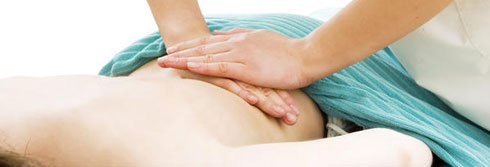
Buttock Pain
Buttock pain is most commonly seen in athletes involved in kicking or sprinting sports. It can occur in isolation or it may be associated with low back or posterior thigh pain. Pain in this region may arise from a number of local structures or be referred from the lumbar spine or sacroiliac joint.
A deep, aching, diffuse pain, variable in site is an indication of referred pain. Buttock pain associated with low back pain suggests lumbar spine abnormality. See Refered Lumbar Pain
Buttock pain associated with groin pain may suggest sacroiliac joint involvement. See Sacroiliac Joint Dysfunction
Pain that is easily localised and of a fairly constant nature, is more likely to be from the buttock itself. See Teninopathy
Refered Lumber Pain
Pain referred from the lumbar spine may be a result of abnormalities of the intervertebral disks and the apophyseal joints. Spondylolysis and spondylolisthesis may also cause buttock pain. These conditions and the treatment for them is covered in Low Back Pain.
Sacroiliac Joint Dysfunction
Sacroiliac joint dysfunction may refer pain to the buttock. The sacroiliac joint is the articulation of the sacrum (at the base of the spine) with the pelvis. The most common presentation that we see is unilateral pain (although it can be bilateral). Clinically the patient has deep seated buttock pain, difficulty in negotiating stairs and problems rolling over in bed. With this condition there is often a rotation of the sacroiliac joint with one side of the pelvis being higher than the other resulting in a possible leg length discrepancy. This is often associated with instability of the low back and pelvis.
Treatment involves reduction of local inflammation and correction of the biomechanical dysfunctions present within and around the pelvis. Stretching and massage therapy are important to correct imbalances while a specific rehabilitation program is imperative to improve overall control of the lumbopelvic area.
Teninopathy
The hamstring muscle group have an attachment from the buttock region. This attachment is a common site of a tendinopathy as a result of overuse. Treatment involves deep massage, stretching and correction of any biomechanical abnormalities with a structured rehabilitation program
Book now to arrange an immediate appointment
To arrange an appointment or to speak to a physiotherapist, please call our friendly reception staff on 0161 883 0640 or email office@stockportphysio.co.uk

